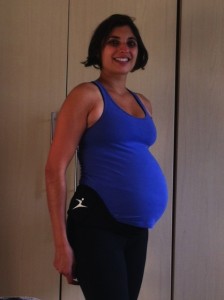Squats – I’m a fan. How to perfect your technique.
Squats are back people and they rock. I’ve always been a fan of the squat, now that I’ve learnt even more about the body I’m an even bigger fan…. and it’s not just me, squats are everywhere I look. Why?
1. They work your pelvic floor without you having to think about switching it on… this happens when you push up to standing from your squat.
2. They’re simple and safe to perform throughout pregnancy, post-natally and beyond.
3. They work your thighs and glutes, perfect for toning those areas and for helping with weak gluts which is a frequent issues I see in people.
4. They are functional, so they train you for everyday activities. I squat when picking things up, and putting the washing in the machine for example.

Start in neutral with your feet hip distance apart, in parallel. Check your pelvis is in neutral, your shoulders blades are down in your back and your core is engaged.
Now sink your weight back, letting your hips go back and feeling the weight go right into your heels so your gluts engage. You may feel you are about to topple over so try it out near a chair or windowsill to start with, preferably with a mirror nearby.
Now in that squatting position check in a mirror that:
- your back is not arched
- you are not leaning too far forward through your upper body
- your knees should not be further forward than your toes, if you can keep them over your ankles
- your heels are down
- you have bent from your hips and not your back
- your core is still engaged
If you are pregnant the added bonus is… They prepare your body for labour (particularly useful if you’re wanting an active birth where you’re encouraged to stay active and move around during labour).
Now get squatting!















